Project Tasks
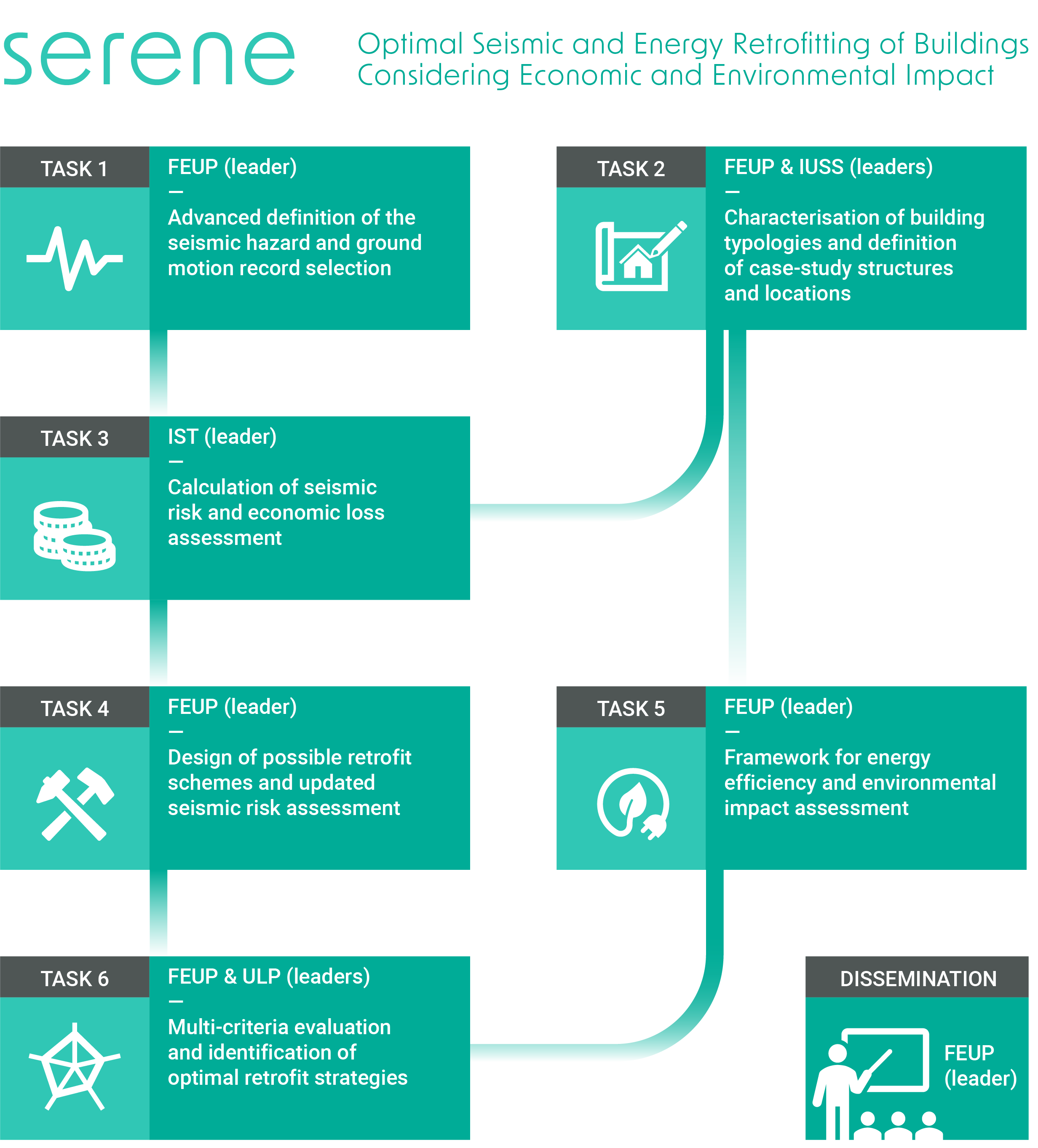
ADVANCED DEFINITION OF SEISMIC HAZARD AND GROUND MOTION RECORD SELECTION
A thorough review of seismic hazard models for Portugal will be made with simultaneous improvements to calculate advanced ground motion intensity measures more suitable for multiple buildings with distinct periods of vibration (related to the different retrofit schemes). All the required parameters for the loss assessment to be conducted in Tasks 3 and 4 will be obtained, followed by the selection of strong-motion records for dynamic analysis of the buildings.
CHARACTERISATION OF BUILDING TYPOLOGIES AND DEFINITION OF CASE-STUDY STRUCTURES AND LOCATIONS
An identification and collection of data on the most representative residential building typologies of the Portuguese context, in terms of seismic retrofitting and energy efficiency, will be carried out, defining a set of case-study buildings. Different locations, characterised by different seismic hazard levels and climate conditions, will be assumed for all the buildings, to explore different scenarios of combined interventions.
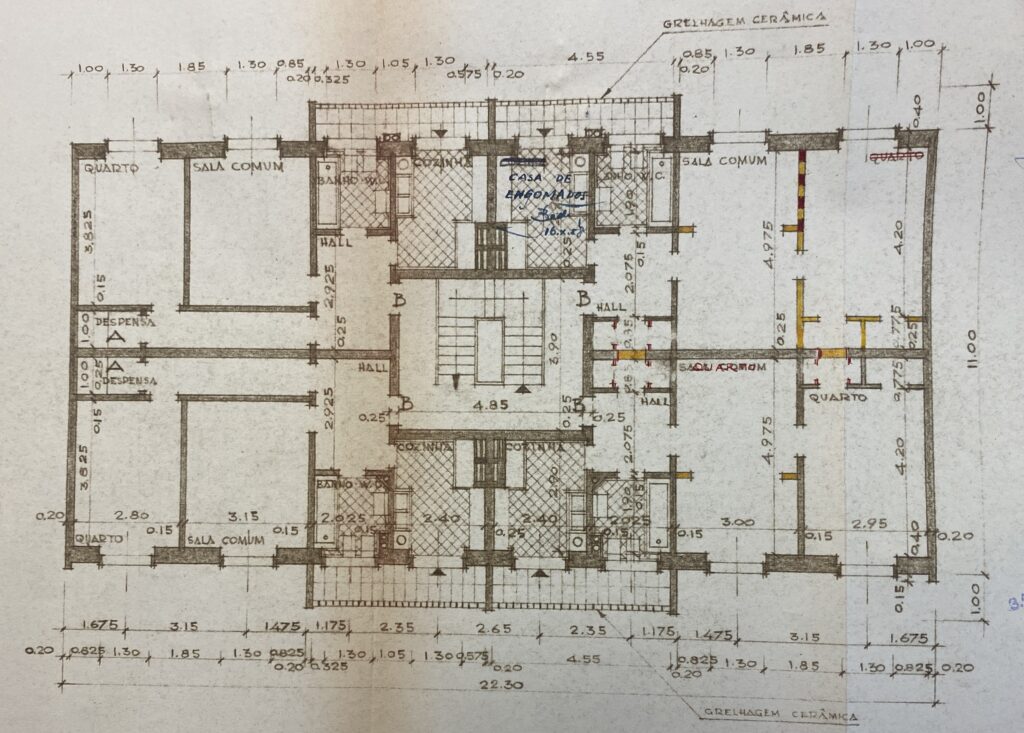
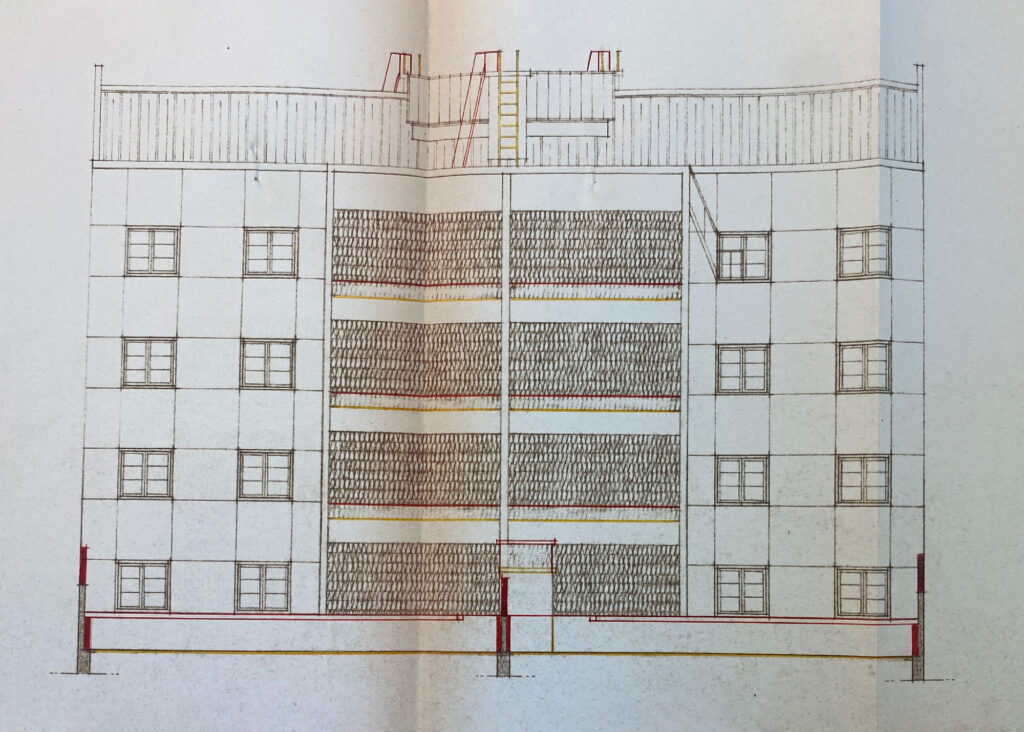
CALCULATION OF SEISMIC RISK AND ECONOMIC LOSS ASSESSMENT
Task 3 will feature the structural modelling and seismic loss estimation of the case-study buildings for the different scenario locations, using two levels of refinement: a detailed (PEER-PBEE component-based loss assessment) and a simplified (displacement-based loss assessment (DBLA)) approach.
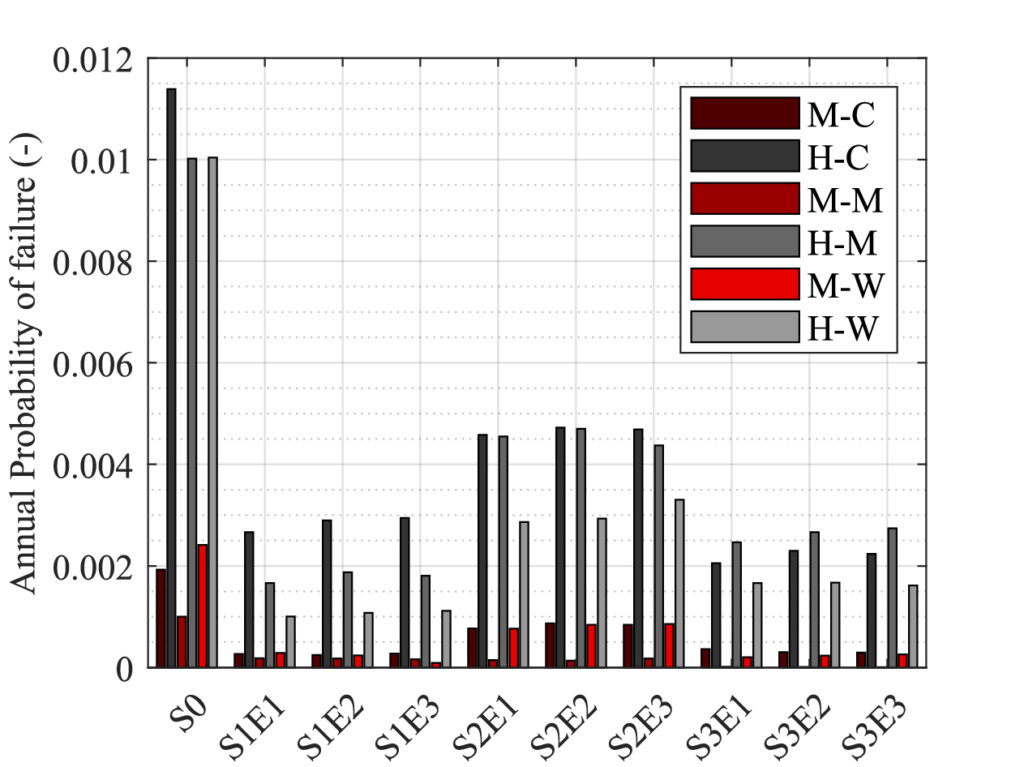
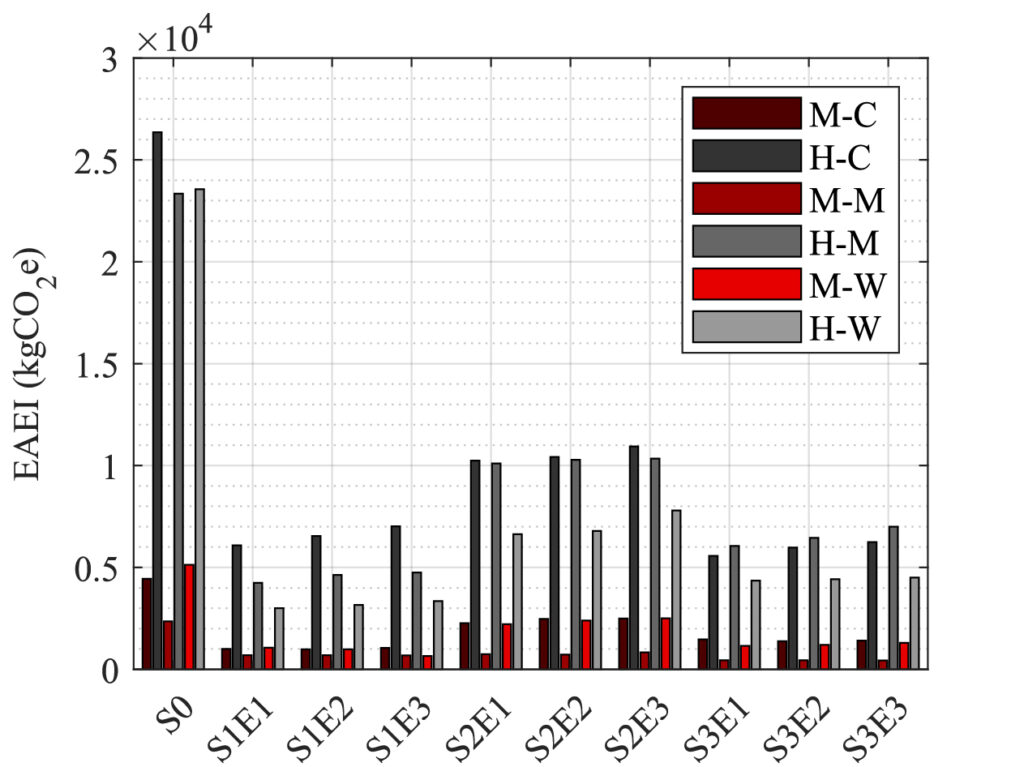
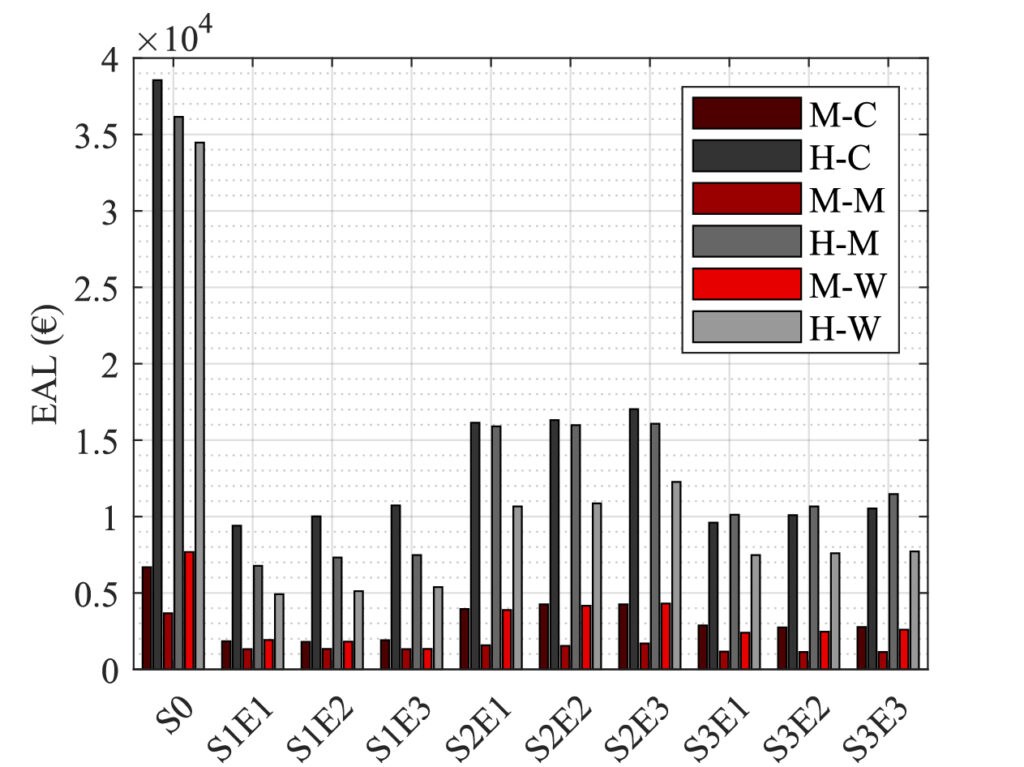
DESIGN OF POSSIBLE RETROFIT SCHEMES AND UPDATED SEISMIC RISK ASSESSMENT
Task 4 will build upon the seismic structural performance of the case-study buildings (Task 3), to design and model different alternative retrofitting strategies to address such deficiencies. Then, a new loss assessment will be conducted to quantify its reduction, with respect to the as-built configurations, introduced by the retrofitting. This task will also collect all the necessary information on the different retrofit schemes that will enable the quantification of the associated EI (Task 5) and the application of the MCDM framework (Task 6) for the identification of the optimal intervention strategy.
FRAMEWORK FOR ENERGY EFFICIENCY AND ENVIRONMENTAL IMPACT ASSESSMENT
This task will look into the past efforts to characterise and quantify the energy efficiency of existing buildings, proposing a framework to be applied to the Portuguese context, that can be easily combined with a seismic risk assessment framework. Modelling (using the data collected in Task 2) and assessing the energy retrofitting solutions will be performed using life-cycle-based metrics (e.g. equivalent cost/losses). Furthermore, the EI of both seismic- and energy-related building interventions will also be estimated and considereded in the decision-making framework of Task 6.
MULTI-CRITERIA EVALUATION AND IDENTIFICATION OF OPTIMAL RETROFIT STRATEGIES
Finally, Task 6 will propose and apply an MCDM framework for the identification of the optimal seismic and energy retrofit strategies, proposed and characterised in Tasks 4 and 5. The framework will be based on multiple decision variables that range from structural and energy performance to architectural impact or disruption of use. Each variable will be assigned a specific importance weight that reflects the decision-maker’s perspective and priorities. Considerations on the optimal retrofit strategies and on the goodness of the integration of both intervention types will be made for the different case-study building typologies and location scenarios.
